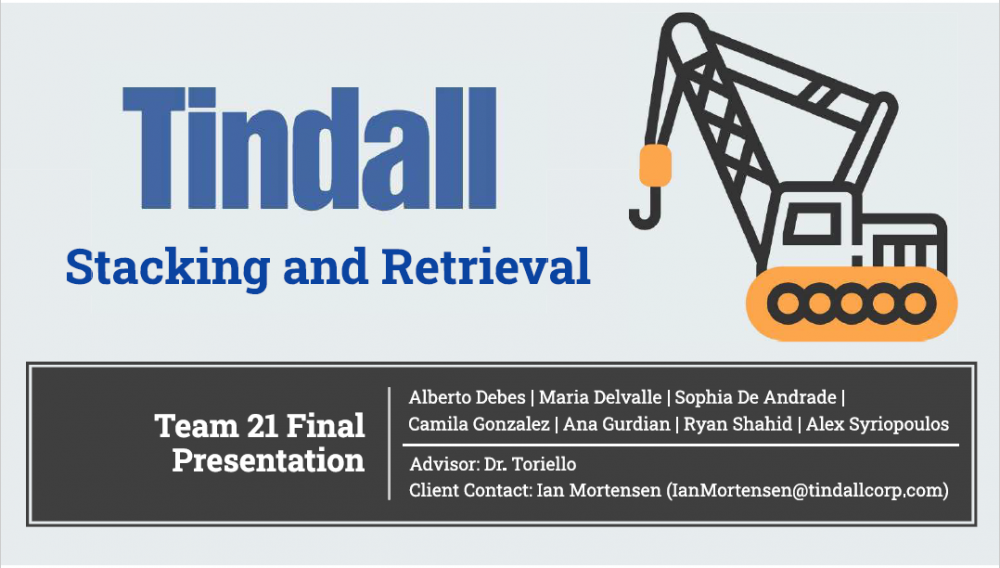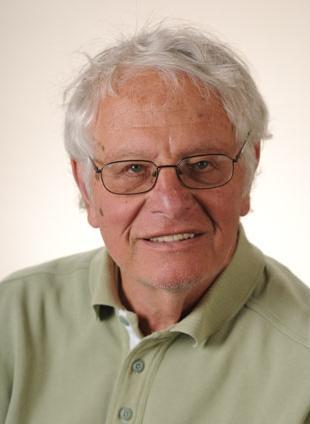Client Context
Tindall Corporation is one of the largest precast and prestressed concrete solution manufacturers in the United States. Currently, Tindall owns six facilities across several states and supplies its products both nationally and internationally to Canada and Cuba. Their annual revenue is $100-$500 million and the company has over 1,000 employees. Tindall creates specialized structures for the construction industry including mixed-use and parking structures, manholes, underground structures, modular buildings, prison cell systems, architectural wall panels, insulated concrete wall panels, precast concrete pipe supports, and beam and column framing.
This project focuses on Tindall’s facility in Conley, Georgia. Part of the facility’s process involves storing custom concrete pieces of varying sizes that they produce. Ten different solution types are produced, but this project focuses only on those that can be stacked. For simplicity, they are divided into two groups: the Double Tees (DTs) and the other types of solutions, which are referred to as Non-Double Tees (Non-DTs). The Non-DTs include: Wall Panels (WP), Spandrels (SP), Shear Walls (SW), Lite Walls (LW), Flat Panels (FP), Flat Insulated Panels (FIP) and Flat Slabs (FS). Together, DTs and Non-DTs comprise 80% of the facility’s inventory. DTs come in two varying size types: one that ranges between 27 to 32 ft. in length and the second that ranges between 57 to 62 ft. in length. Non-DTs come in a variety of sizes that are dependent on the client and the job. However, their most common range is between 30 to 45 ft. in length.
This project utilizes three years of inventory transaction data derived from the facility in Conley, GA. This data consists of the following information derived from Tindall’s current steps: Precasting, Dry Finish, Sandblasting, Stacking, Relocation/Retrieving, and Shipping (which can be separated in two main steps: Production and Storage).
Project Objective
Tindall was spending an average of 9 hours per day on relocating pieces around the yard, therefore over-utilizing the Mi-Jack that is the machine that transports the concrete pieces around the yard. By spending this many hours only in relocation, the facility often goes into over-time to be able to finish a day’s work. With the over-utilization of the Mi-Jack Tindall is spending around $126,000 dollars just to move inventory around, this is without taking into account the over-time cost of the workers. With this project we looked to maximize the productivity of Tindall’s facility. This objective was achieved by creating a new policy that Tindall could implement to optimize the facility’s storage and retrieval processes of the concrete pieces in order to minimize the average number of relocations.
Design Strategy
Our approach towards this project was analyzing and implementing the Container Stacking and Container Retrieval problems seen in maritime and seaport operations. These involve the moving of shipping containers in a manner that increases throughput and minimizes crane utilization. These methodologies align with Tindall’s process of moving the cement solutions. Additionally, heuristics were implemented that pertained to stacking processes and retrieval methods which would be incorporated into our solution. These heuristics were duration stacking, closest stacking, farthest stacking, and shortest height stacking. For the design process of the project, the first step was to design Tindall’s current process on Simio, using closest stacking as the benchmark for study. The results data Simio provided served as validation as to whether it closely resembled the data Tindall provided on their processes. Once using the results data and model showed accurate information, KPIs such as crane movement’s total distance and number of relocations served as KPIs to be measured. The heuristics were then incorporated to the model and tested to see if the KPIs were reduced, indicating an improvement on the model. Each heuristic had differing results which were analyzed and repeatedly tested to ensure accurate results and then if shown beneficial, were incorporated into a policy that would mimic the simulation logic of the heuristics used. The policy would be flowcharts for use by the loading supervisors at the facility as well as pseudocode that Tindall management could use as a basis for when tablets or mobile technology would be implemented for onsite workers.
Deliverables
After testing different heuristics on Simio, which include duration stacking, closest stacking, random stacking, farthest stacking and shortest height stacking, we determined that the best policy would be to use the shortest height stacking rule when the facility incurs a large relocation cost compared to the travel cost of the mijack, and using the closest available stacking rule when the travel cost of the mijack is larger than the relocation cost. As a deliverable, we drafted a policy:
The policy drafted consists of a written description of the process for each product type step by step, flow charts visualizing the process for each product type step by step, and a pseudocode, ready to be implemented once our client upgrades their inventory tracking technology and can automate part or all of the process.


